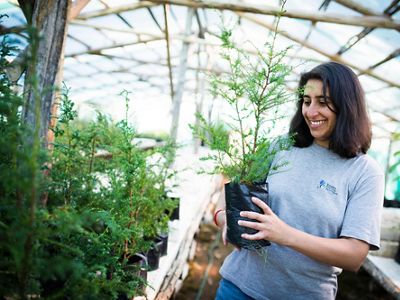
Chile possesses two thirds of the glaciers in Latin America, but water quality and quantity are becoming more of a problem every day. This is especially true in Chile's Mediterranean ecoregion, home to the capital city, Santiago, identified by our scientists as one of the 25 Latin American cities where water security is most at risk. Nature, mining operations, agriculture and urban expansion are fighting for increasingly scarce water.
The Nature Conservancy is working in Chile to protect water at its source by:
- Protecting and restoring critically important habitats
- Transforming how we use and manage nature's resources
- Inspiring people to value and advocate for nature

Protecting and restoring critically important habitats
We are developing and implementing natural solutions, known as green infrastructure—including reforestation, forest protection and wetland restoration—to improve overall water quality and availability.
We help improve the health of Chile's upstream wetlands, glaciers and rare Mediterranean habitats to protect water at its source.
Transforming how we use and manage nature's resources
Sweeping down from the Andes mountains to the Pacific Ocean, only 1% of the Maipo Watershed is protected yet it provides 80% of freshwater to Santiago’s 6 million inhabitants. The watershed also provides water for agriculture and other industries, supporting almost half of Chile’s GDP.
The Conservancy is bringing people together to protect watersheds, river basins and wetlands that provide water to millions of people and to nature. We are creating the Santiago Water Fund to protect wetlands and native vegetation in the Maipo watershed, and improve water quality for nature and people.
- What exactly is a water fund?
Inspiring people to value and advocate for nature
Facing a 40% reduction of its water balance due to climate change, we are helping make Santiago, one of the cities with highest hydrological risk in Latin America, become a resilient city in face of increasing water shortages.
Nature-based solutions will help manage the impact of extreme weather events by building more climate-resilient communities in cities. They can also reduce water treatment costs, improve the health and well-being of people, help preserve biodiversity, and contribute to mitigating climate change.
After meeting with TNC staff and learning about how water funds work, Santiago’s regional governor is committing 10% of his city’s budget to climate resilience and features water funds as a key initiative.
- We are inspiring people around Chile to value and advocate for conservation of lands that protect our water sources.
- Watch our video to learn how!
- Read our Urban Water Blueprint for Santiago.